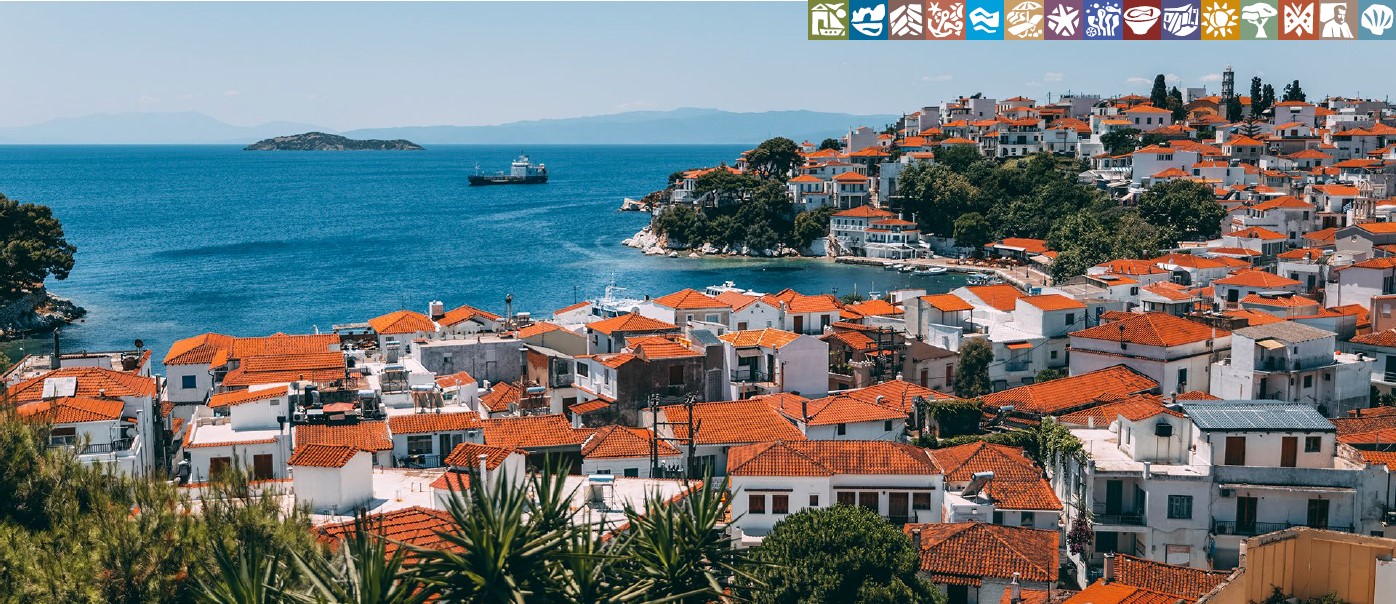
Historical Centre
and south orientation, played a fundamental role in shaping
the island life throughout the years.
It’s a relatively new settlement, built in 1829-1830 at the place
where the ancient town of 800b.C. stood, on top of two hills
on the seaside. The town was completely bombarded by the
Germans at the end of the Second World War and was hastily
reconstructed, maintaining though its character, colour and
unique vividness.
The Skiathian folk architecture, which becomes rarer to spot
as time goes by, isn’t exactly of an islandy nature: it constitutes
a mixed picture of an island and a Pelion village, combined
with neoclassic elements. Throughout the North Sporades
in general, the architecture is simple and functional and
has nothing to do with the one of the Cyclades. Of course, all
these elements are filtered through the temperament, the
preferences and needs of the residents.

Houses are for the most part small, built close to one another, two storeys tall and made of stone. They can be split into two categories: the manors and the rural residences. The authentic Skiathian residences still standing are not that many, but the traditionally architectural elements such as tile roofs and blooming balconies, can be found in the newer residences as well.
In the present town, the narrow streets -most designed haphazardly- are made with paving stones. In the centre of the roads, stones are placed vertically in the earth in a fish bone shape, something that facilitates the removal of the rainwater and makes their construction that much more solid. Small squares can be found in places inside the town. Their creation was either incidental or to showcase something (such as churches, drinking fountains, etc). Iconostasis (tiny churches) can be found throughout the entire island, shrines on the edge of the roads. In beautiful locations we can also spot the traditional fountains with drinking crystal clear water.
The most quintessential example of traditional architecture is in the Plakes area. A visit to Skiathos cannot be complete without a stroll through this gorgeous neighbourhood at the heart of the Old Town. From Ai-Giannakis to the steps for the literal “plakes” (flat rocks) in the middle of the sea, you will lose yourself in this stunning area in the southwest edge of the old port, with the picturesque stone whitewashed houses and the beautiful labyrinthine alleys as well as the scenic listed cobbled streets. Behind the roofs and the blue windows and between the blooming gardens, one can spot a bit of the tempting Aegean blue. Exploring Plakes and traveling through time in the nostalgic area emanating from their aura is an experience not to be missed.
A second stroll not to be missed in the town of Skiathos is on the top of the hill, where the scenic small church of Ai Nicolas stands. The church constitutes a point of reference and was built in 1931 to protect the seamen. From the courtyard of the temple, you can enjoy the panoramic views of the town, the port and the sea as well as the tall clock, one of the first things to catch the visitor’s attention as soon as they approach the port.










